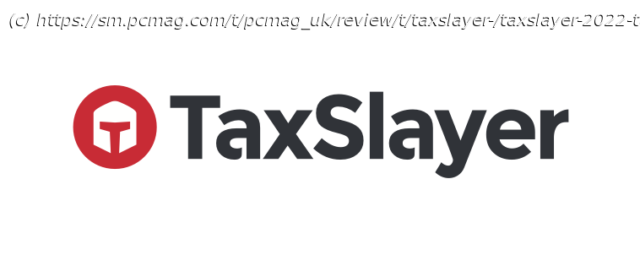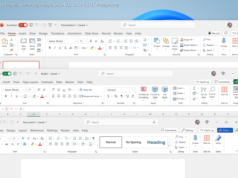Low-cost, comprehensive personal tax preparation
TaxSlayer started as a tool for accountants and professional tax preparers more than 50 years ago. The company entered the individual tax preparation software market in the 1990s and has had a big presence ever since. This year we’re looking specifically at TaxSlayer Classic, which supports all major IRS forms and schedules at a very affordable price. This affordability combined with comprehensive coverage of tax topics has kept TaxSlayer Classic among the best tax software. TurboTax, though, is our Editors’ Choice winner for the 2021 tax year. Taxslayer provides a thorough outline for common Form 1040-related topics and a searchable database of help files — improved for the current tax year — as well as guidance sprinkled throughout. The current version includes several new features and enhancements, including special attention on the child tax credit, refined navigation and efficiency, more targeted help, and tweaks to the overall user experience. We weren’t able to test the site’s new ability to upload CSV files containing investment transactions nor the enhancements to the Quick File feature because they weren’t live yet. How Much Does TaxSlayer Cost? TaxSlayer is available in four different versions. Simply Free is, well, free—for both federal and state returns for Form 1040 filers. W-2 reporting and education deductions and credits are also included. Classic ($17 for federal returns) adds support for all major IRS forms and schedules. Additionally, it imports W-2 data from payroll providers and pulls key information from the previous year’s file. TaxSlayer Premium includes all the features from Classic and adds enhanced support options, audit assistance, live chat, and unlimited phone access to tax professionals for $37. Self-Employed ($47) adds extra guidance for self-employed filers. Filing your state taxes for 2021 — which is what you’ll be doing in 2022 — now costs $36.95 per state. Those are attractive prices, but it’s tough to compete on price alone in the tax field. Cash App Taxes (formerly Credit Karma Tax) offers a service that handles all IRS forms and schedules—and state returns—for free, though its help system and options are far less developed than TaxSlayer’s. FreeTaxUSA also offers comprehensive topic support and good help tools on the cheap. Its federal preparation and filing are free and state returns are $14.99 each; you need to pay extra for expanded support, but even that cost is very low at $6.99. Some tax prices tend to go up as the season goes on, but I’ve never seen TaxSlayer increase its prices for the federal versions. Tax in the Cloud Regardless of which tax preparation service you choose, you have to provide the same information you would if you were filing on paper or in a tax preparer’s office. Online tax preparation is something of a hybrid of those two methods: It’s basically a lengthy question-and-answer session. Using a wizard-like tool, most services guide you through all the issues pertinent to your financial situation. Sometimes you respond with numbers, words, or phrases, but often you only have to select from a list of options. The site then performs any necessary calculations and fills in your answers on the correct government forms and schedules. One benefit is that you don’t need to understand the tax schedules themselves or figure out how they’ve changed from year to year. Every service allows experienced tax filers or those with simple returns to select the tax topics they know they need to complete, skipping the full step-by-step wizard. Whichever method you choose—TaxSlayer offers both, as I’ll explain—these services offer numerous forms of help along the way, including links to more thorough explanations and voluminous help databases. Some also provide personalized help via chat, email, and phone. Relevant data is transferred to state returns, where additional work is usually necessary. After you enter all the required data, these sites perform a final review and look for errors and omissions in your return. Once you make the corrections, you enter payment information to cover that site’s costs and file your return. Building Your File After you choose a version of TaxSlayer, you set up an account by creating a username and password. Once you’ve signed in, the first thing you see is a landing page called My Account. TaxSlayer will always open to this screen when you log in. It shows you the status of your 2021 return, along with your real-time refund or obligation. If you’ve used TaxSlayer in the past, you’ll also see links to your taxes from previous years. Click Continue, and TaxSlayer takes you back to where you left off on your most recent visit. This setup is much more useful than Liberty Tax ’s landing page, which doesn’t return you to your previous last page. If this is your first year preparing taxes online, you have to provide background information before you start entering tax data. If you filed your 2020 return with TaxSlayer, the site imports key information, which saves a lot of time and helps to ensure accuracy, assuming you got it right last time. You can also import PDF files prepared by competing services for the 2020 tax year. Whether you’re returning or starting fresh, you still have to answer some basic questions up front about, for example, your filing status, dependents, principal residence, and the advance child tax credit (you’ll come back to this one later). After summarizing the information you just entered, it’s on to tax preparation. TaxSlayer Classic lets you simply select the forms and schedules you need to complete using a process called Quick File. You start to enter a keyword or the name of a form or schedule, and the Quick File tool populates a drop-down list with one or more relevant entries.






